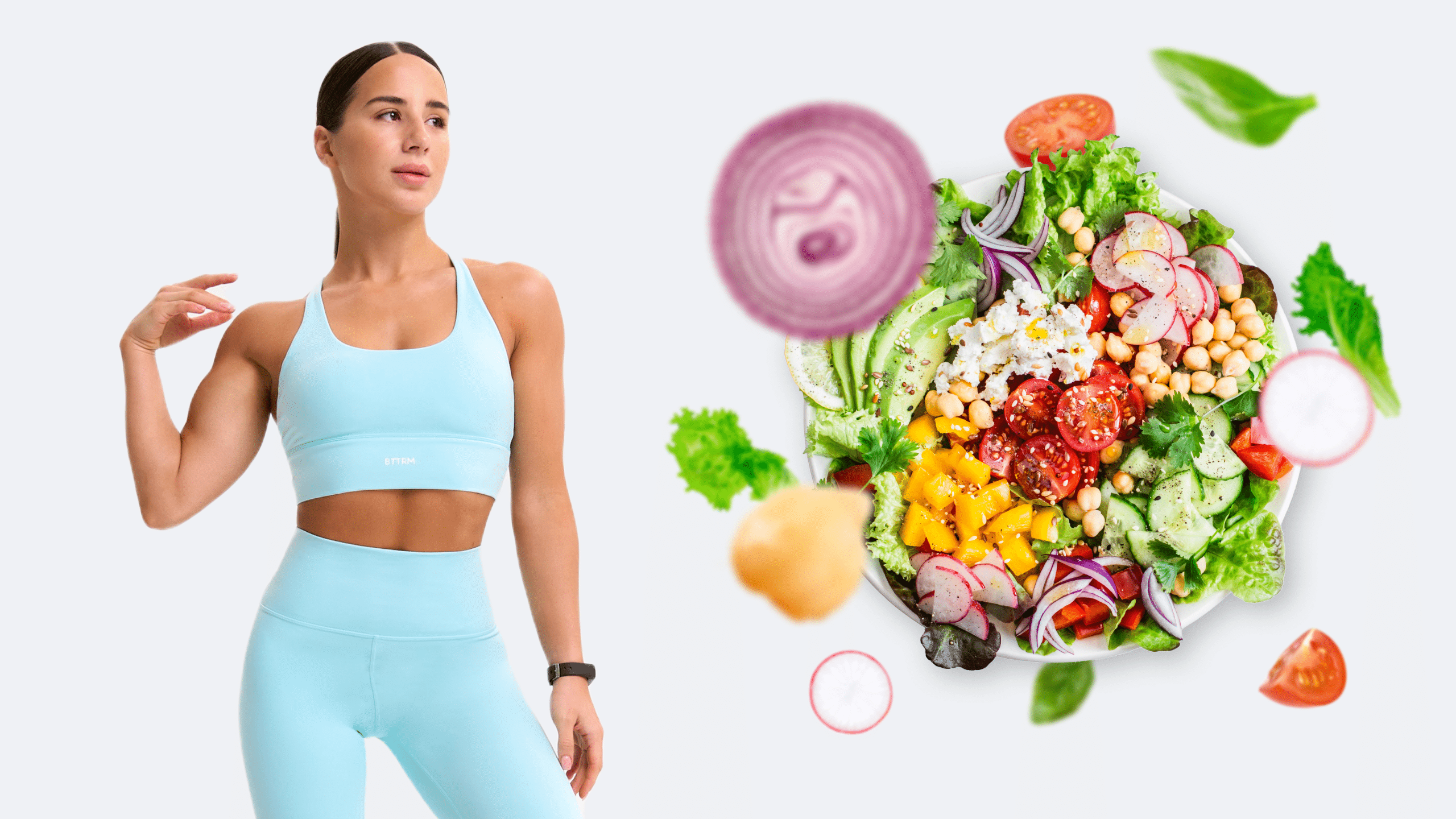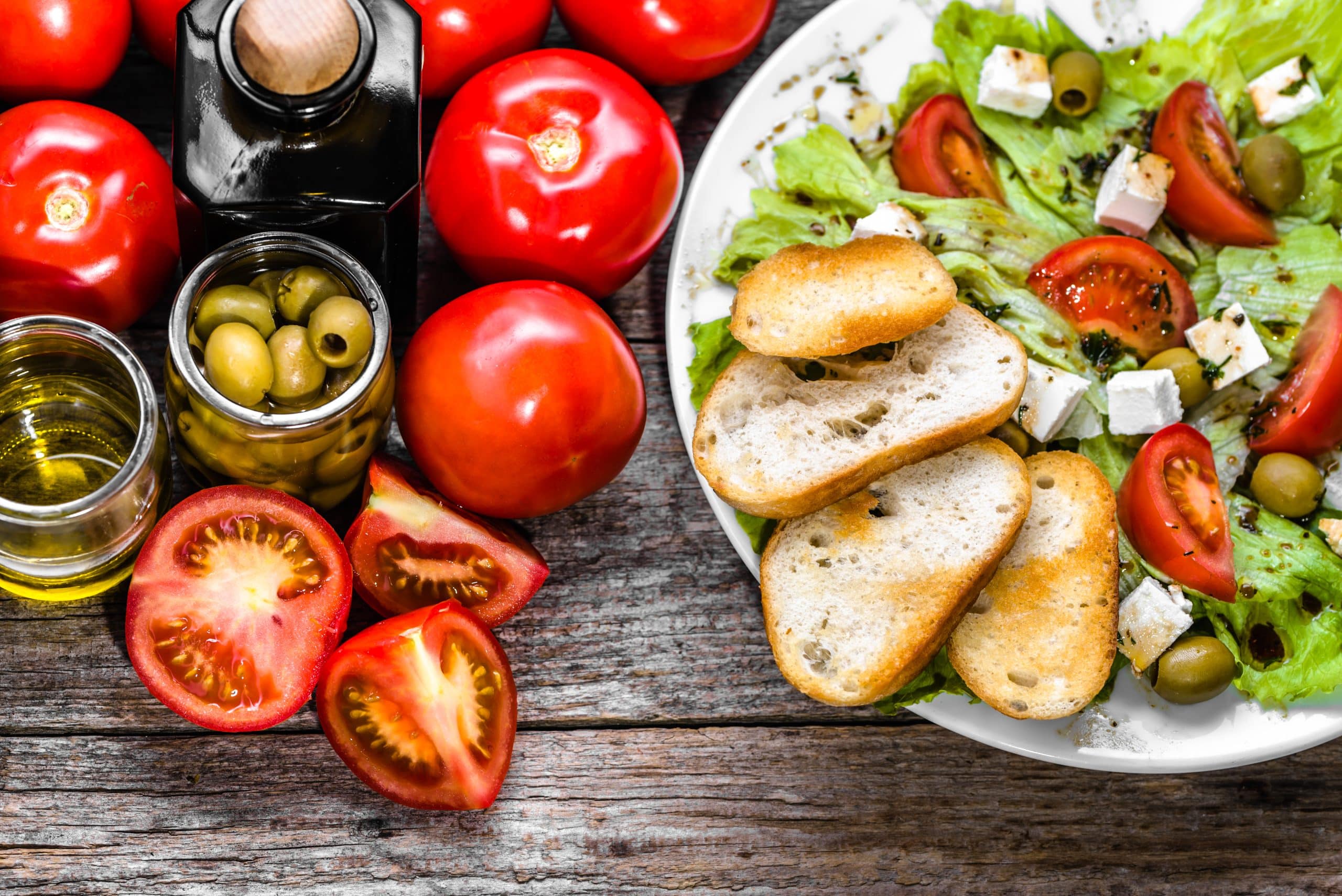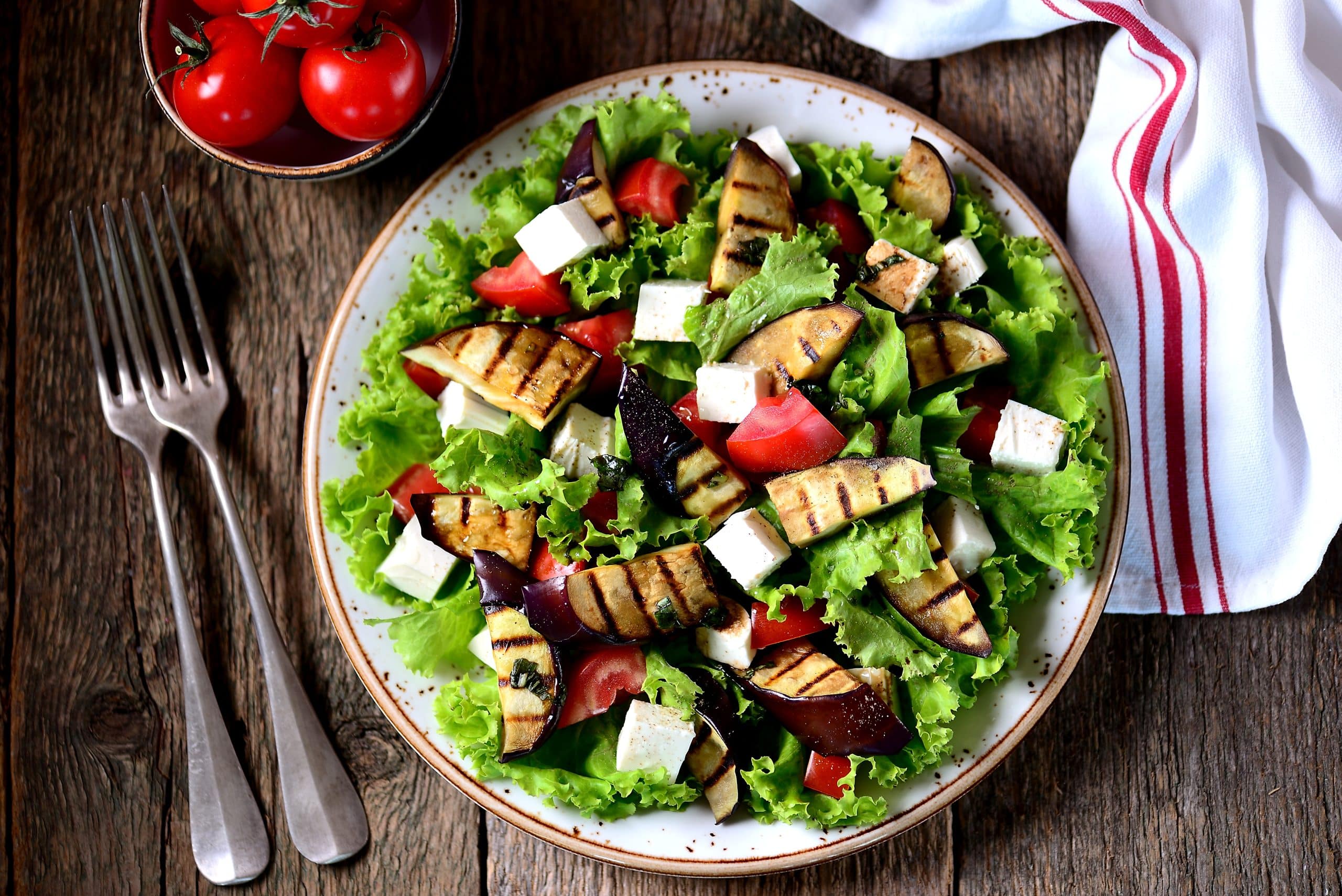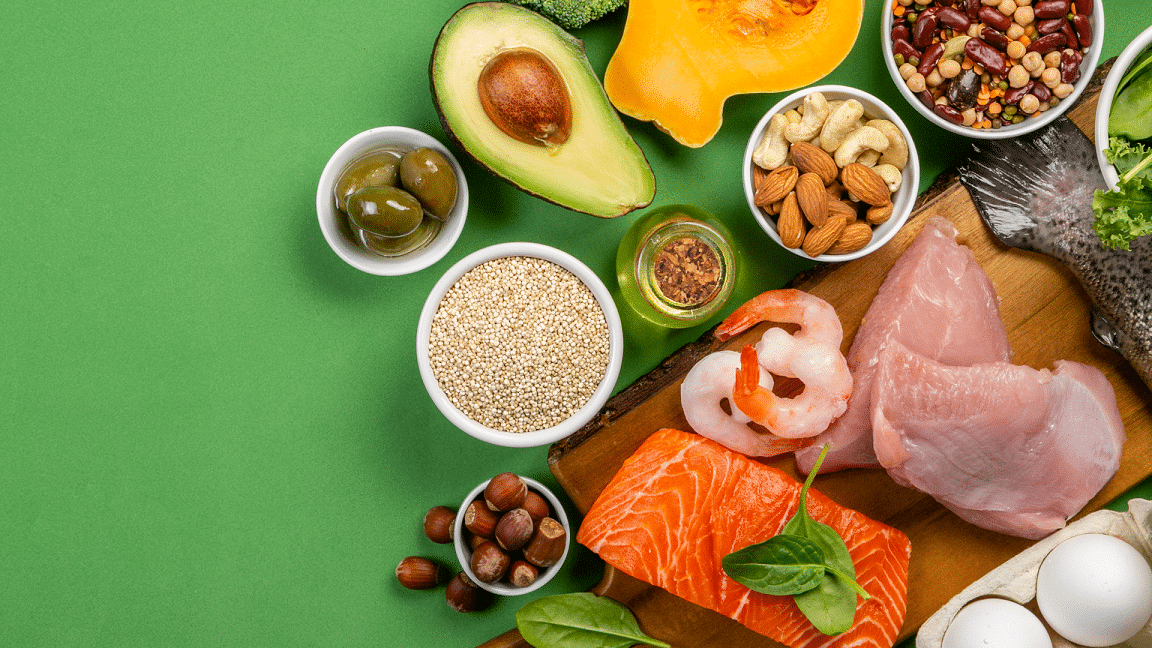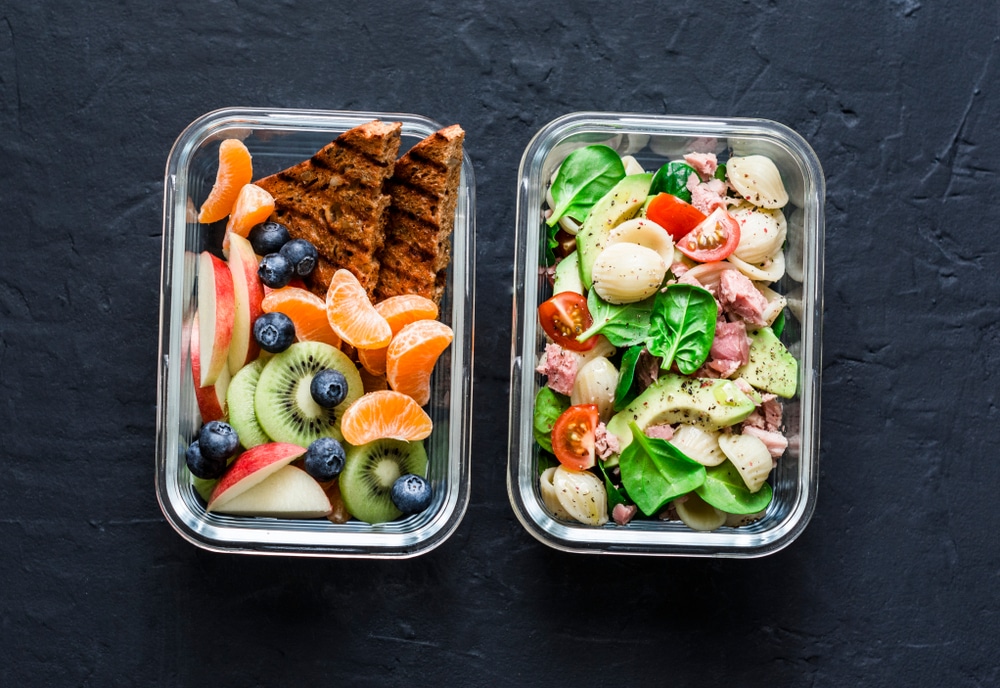Mediterranean Diet is one of the most popular and least restrictive dietary plans out there. It focuses on increased consumption of fruits and vegetables, healthy fats and proteins largely from olive oil, seafood, nuts, and legumes. In fact, you can eat pretty much anything on the Mediterranean diet, except for the common no-go’s like sweets and junk food. Still, you may wonder which foods that made the green light list offer the most health benefits and what portion sizes will keep the hunger pangs at bay and hold you back from backsliding into health-crushing eating habits. Keep on reading, make mental notes and be sure to add our ultimate Mediterranean diet food list to your weight loss arsenal.
The Mediterranean Diet Pyramid
Understanding the Mediterranean Diet Pyramid is crucial for grasping the philosophy of this dietary plan. The importance of the eating process is highly underpinned. In the Mediterranean countries dinners are traditional practices aimed at encouraging connections among the people around. The bottom line is your meals should not be quick snacks you basically inhale on the go. On the contrary you should take your time, nibble on your food, let your taste buds go crazy, allow your leptin and dopamine levels skyrocket while spending quality time with people who make you overflow with joy. As this diet instead of restriction offers you plenty of delicious foods, it is important to enjoy every piece and share it with others. The way you eat is essential if you wish to adhere to this plan.
The largest share of the Mediterranean diet food list is about fruits, vegetables, whole grains, olive oil, beans, nuts, legumes and seeds, herbs and spices. The second largest share consists of healthy proteins, mainly from seafood. Then go poultry, eggs, cheese, and yoghurt. The sweets and meats though should be kept to a minimum. Here are some foods you should pay attention to when piecing together a Mediterranean diet food list and heading to the market to stock up on your groceries.
Read More: Mediterranean Diet vs Paleo: Which Eating Pattern Should You Follow and Why?
1. Extra Virgin Olive Oil
Extra virgin olive oil is an amazing source of antioxidants and healthy fats
Regular olive oil is refined and lacks important nutrients and antioxidants. By contrast, the natural extraction process used to produce Extra Virgin Olive Oil ensures it retains all the nutrients and antioxidants from the olive fruit. In particular, it contains over 30 different types of phenolic compounds, which are strong antioxidants that guard the body from free radicals. Free radicals are molecules that cause cell damage, contribute to the development of diseases and speed up the aging process (12).
The composition of fats in extra virgin olive oil is also a significant contributor to its healthfulness. It’s mostly made up of monounsaturated fat, a heart healthy fat that is a staple of the Mediterranean diet.
Studies consistently link a diet high in monounsaturated fat with positive effects on markers of cardiovascular disease (heart disease and stroke). In particular, monounsaturated fats reduce chronic inflammation, blood pressure, cholesterol levels and blood glucose levels (9, 8, 13).
Surprisingly, the population of Mediterranean Europe has low rates of mortality from heart disease, while it is the first cause of death in the other regions of the world. This is in part because the active compounds in olive oil contain powerful cardioprotective properties that help to lower blood pressure and prevent atherosclerosis (2, 7).
BetterMe app is a foolproof way to go from zero to a weight loss hero in a safe and sustainable way! What are you waiting for? Start transforming your body now!
2. Legumes
The legume family consists of plants that produce a pod with seeds inside. The term “legume” is used for description of the seeds of these plants. Common legumes used for cooking include lentils, peas, chickpeas, beans, soybeans, and peanuts.
Legumes are remarkably rich in healthy fibers, such as resistant starch and soluble fibers. Both types of fibers pass undigested foods through your stomach and small intestine until they reach your colon, where they feed your good gut bacteria.
These fibers assist in forming short-chain fatty acids, such as butyrate, which has connecion to improvement of colon health and reduction of your risk of colon cancer Moreover, both resistant starch and soluble fibers increase the feeling of satiety. In addition, they exceed at moderating blood sugar levels after meals and may improve insulin sensitivity. Legumes have also been linked to a number of other health benefits, including a reduced risk of heart disease and lower cholesterol levels. Some research also suggests that regular consumption of these plant foods may reduce blood pressure and triglycerides (3). As mentioned above, due to their high fiber and protein contents, legumes help you feel full — thus reducing food intake and assisting steady weight loss.
3. Nuts
Nuts provide your body with key nutrients, proteins, healthy fats, and antioxidants. They increase life expectancy and aid in cholesterol reduction. Different types of nuts have a host of specific benefits. Let’s dive into them.
- Almonds
These nuts score the highest in calcium of all other types. Almonds are also high in fiber, vitamin E and magnesium. They are effective in lowering cholesterol and reducing the risk of heart disease, and can help protect against diabetes (1).
- Cashews
This type is rich in iron and high in magnesium. Unsaturated fat, that cashews are filled to the brim with, is predominantly oleic acid. On a side note, oleic acid makes up 55–83% of olive oil. Cashews help prevent cancer (15), promote a healthy heart and strong bones, and also support your skin and hair condition.
- Walnuts
Walnuts are high in omega 3 fats, antioxidants, and phytosterols. These nuts are good for your heart and brain. On top of that, they might lower the risks of cancer. Walnuts also fend off age related diseases, such as Alzheimer’s, and may alleviate the symptoms of depression (17).
- Hazelnuts
These nuts are rich in unsaturated fats, high in magnesium, calcium and vitamins B and E. Hazelnuts are good for your heart, they reduce the risk of cancer (16), and aid in muscle, skin, bone, joint and digestive health.
- Peanuts
Technically a legume, these oft-neglected nuts contain the highest amount of folates compared to the other nuts, which are essential for brain development. Peanuts are also high in Vitamin E. Moreover, they promote a healthy pregnancy because of the high folates which help reduce the risk of birth defects. Peanuts also aid in boosting memory, help fight depression, and reduce the risk of heart disease (14).
- Pecans
Although high calories and fat, they are still good for you – especially for men. Pecans contain beta-sitosterol which helps alleviate the symptoms of an enlarged prostate.
Read More: Best Dried Fruit For Weight Loss: Can These Healthy Snacks Keep Hunger At Bay?
4. Leafy Greens
The Mediterranean diet food list focuses heavily on vegetables. And unsurprisingly leafy greens take center stage in any recipe that includes veggies. So don’t be shy and double down on kale, collard, spinach, and arugula whenever you can.
Leafy greens are good for our bodies and our brains. Research shows that a diet that contains plenty of leafy greens is connected to a reduced risk of heart disease, certain cancers, macular degeneration, and type 2 diabetes. They may also help to keep memory sharp as a person ages (4).
They are an amazing source of nutrition for our bodies. Additionally, leafy greens are a great way to add color, texture and flavor to your meals. And thankfully, they are easy to add to your daily menu.
Here are the key features of some particular leafy greens you should include in your Mediterranean menu.
- Arugula
Arugula is exceptionally rich in vitamin K, which aids in prevention of osteoporosis and inflammatory diseases. Like other cruciferous vegetables, it has glucosinolates, which may protect against certain cancers (11). It goes particularly well in salads.
- Collards
This cooking green is quite rich in calcium, fiber, folate, and the antioxidant carotenoids beta carotene and lutein. If you sauté it in olive oil, garlic, and with a little smoked salt, it will add flavor and make it healthier than the traditional ham hock or bacon preparation.
- Kale
Opt for kale for vitamins C and K, lutein and zeaxanthin. They may help to protect against age-related macular degeneration and possibly cataracts (6), and cancer-fighting glucosinolates. Use baby and mature kale in salads; you might add the mature one to your pasta.
- Romaine
Beta carotene, which your body converts to vitamin A, and folate are its main nutrients. It’s best in salads or on sandwiches.
Intense sweat sessions, working weight loss tips, lip-smacking recipes come in one package with the BetterMe app. And all of it is at your fingertips, start transforming your life now!
5. Seafood
Seafood is a natural source of vitamins and minerals. B-complex vitamins, vitamin D and vitamin B. B-complex vitamins perform a ton of different functions, influencing energy production, metabolism, concentration, and even beauty! Some kinds of fish like salmon are rich in vitamin A, which helps protect vision and boost the immune and reproductive system’s capabilities. Another vitamin found in some seafood is vitamin D, which influences healthy bone growth, calcium absorption, and boosts immune system efficiency as well as cell growth.
While seafood is healthy enough to be low in saturated fats and high in protein, its greatest benefit lies in its abundant source of omega-3 fatty acids. While several studies have been conducted on the benefits of the omega-3 fatty acids, they are most notably known for their benefits in heart health (10). In fact, they can significantly reduce the risks of various cardiovascular diseases. In addition, seafood maintains eyesight, improves skin condition, boosts your brainpower, and lowers the risk of depression (5).
The Bottom Line
To sum up, the Mediterranean Diet is one of the steadiest and healthiest dietary approaches out there. The Mediterranean Diet food list consists of diverse products from all food groups providing you with all essential vitamins and minerals. Make sure to combine your healthy dieting with a well-thought workout routine. Check out thus 20 Minute Full Body Workout at Home, as it takes little time, but might be extremely beneficial for your health and mood.
DISCLAIMER:
This article is intended for general informational purposes only and does not address individual circumstances. It is not a substitute for professional advice or help and should not be relied on to make decisions of any kind. Any action you take upon the information presented in this article is strictly at your own risk and responsibility!
SOURCES:
- Almond consumption and cardiovascular risk factors in adults with prediabetes (2010, ncbi.nlm.nih.gov)
- Beneficial effects of the olive oil phenolic components oleuropein and hydroxytyrosol: focus on protection against cardiovascular and metabolic diseases (2014, ncbi.nlm.nih.gov)
- Cereal grains and legumes in the prevention of coronary heart disease and stroke: a review of the literature (2006, ncbi.nlm.nih.gov)
- Dark Green Leafy Vegetables (2013, ars.usda.gov)
- Dietary fish, n-3 polyunsaturated fatty acid consumption, and depression risk in Japan: a population-based prospective cohort study (2017, nature.com)
- Dry macular degeneration (n.d., mayoclinic.org)
- Effects of High Phenolic Olive Oil on Cardiovascular Risk Factors: A Systematic Review and Meta-Analysis (2015, ncbi.nlm.nih.gov)
- Effects of Monounsaturated Fatty Acids on Glycaemic Control in Patients With Abnormal Glucose Metabolism: A Systematic Review and Meta-Analysis (2011, ncbi.nlm.nih.gov)
- Effects of Olive Oil on Markers of Inflammation and Endothelial Function—A Systematic Review and Meta-Analysis (2015, ncbi.nlm.nih.gov)
- Fish Intake Is Associated With Lower Cardiovascular Risk in a Mediterranean Population: Prospective Results From the Moli-sani Study (2017, ncbi.nlm.nih.gov)
- Fruit and vegetable intake and the risk of cardiovascular disease, total cancer and all-cause mortality—a systematic review and dose-response meta-analysis of prospective studies (2017, ncbi.nlm.nih.gov)
- Mechanisms of Action of Phenolic Compounds in Olive (2017, ncbi.nlm.nih.gov)
- Metabolic Effects of Monounsaturated Fatty Acid-Enriched Diets Compared With Carbohydrate or Polyunsaturated Fatty Acid-Enriched Diets in Patients With Type 2 Diabetes: A Systematic Review and Meta-analysis of Randomized Controlled Trials (2016, ncbi.nlm.nih.gov)
- Nut consumption and risk of coronary heart disease: a review of epidemiologic evidence (1999, ncbi.nlm.nih.gov)
- The relationship between nut intake and risk of colorectal cancer: a case control study (2018,ncbi.nlm.nih.gov)
- Viability-reducing activity of Coryllus avellana L. extracts against human cancer cell lines (2017, ncbi.nlm.nih.gov)
- Walnuts Have Potential for Cancer Prevention and Treatment in Mice (2014, ncbi.nlm.nih.gov)








